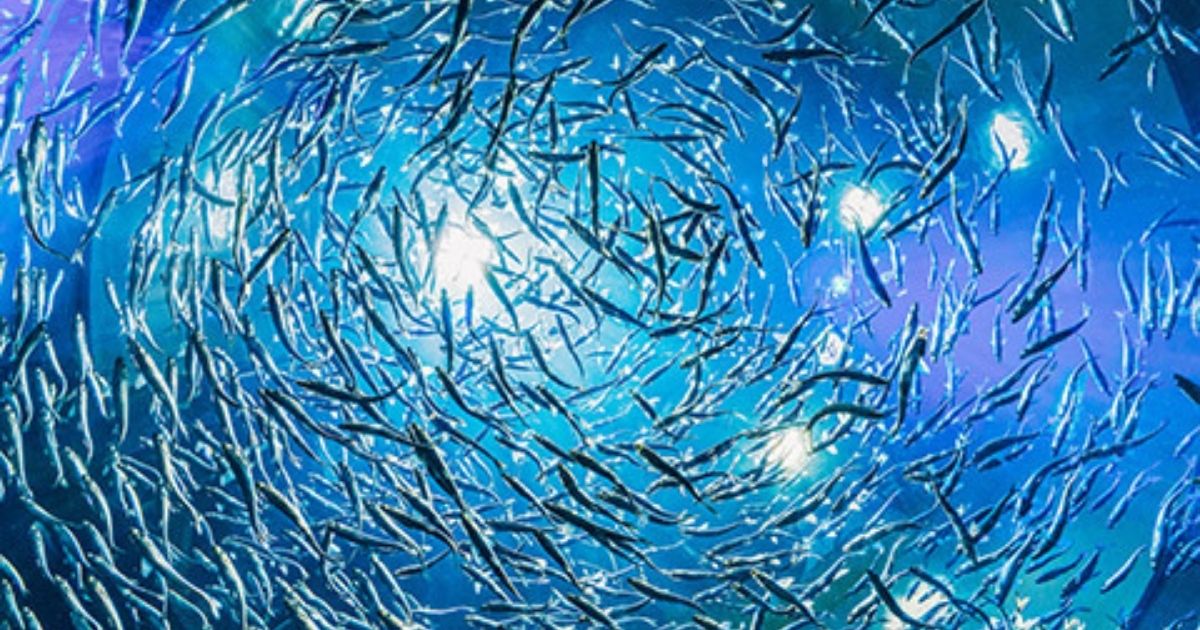A new study has shown how fish influence ocean ecosystems in coastal regions, revealing for the first time how they circulate nutrients and oxygen around the waters when they spawn. This process is key to keeping the ecosystems running.
Oceans are made up of multiple layers, ranging from lighter, warmer waters at the top to denser, cooler waters at the bottom. Ocean mixing is vital to move heat, oxygen, nutrients and pollutants between different layers and therefore plays a major role in how ecosystems sustain life.
Although it is well established that winds and tides supply the bulk of the energy that drives mixing, the contribution made by swimming organisms has not been understood - until now.
 Image: Harrison Haines from Pexels
Image: Harrison Haines from Pexels
In this new study, a team led by the University of Southampton spent fifteen days monitoring water turbulence in the Ría de Pontevedra, a bay in the north-west coast of the Iberian Peninsula. The researchers used an instrument called microstructure profiler, which measures variations in the ocean current speed and temperature over very small distances.
The results, published in the journal Nature Geoscience, showed that increased levels of turbulence and mixing occurred every night, similar to turbulence caused by a major storm, despite the weather staying calm throughout the study.
Using acoustic information from the ship's echosounder and samples collected with small fishing nets the research team were able to attribute the signal to shoals of fish, which gathered in the area at night. In particular, the small nets were full of recently spawned eggs of European anchovy, Engraulis encrascicolus, providing strong evidence that the anchovies’ frantic behaviour during spawning caused the turbulence.
“We believe that biological mixing was intense in our observations because the bay is highly stratified - the temperature and other properties vary significantly at different depths,” explained Dr Bieito Fernández Castro, a research fellow at the University of Southampton who led the study.
“Previous studies have suggested that biological turbulence causes minimal mixing because the circular motions of water that the fish generate while swimming are too small. This is certainly true in the open ocean, where temperature changes occur over tens of meters. However, we have shown that closer to land, where the layers change over a much shorter distance, the anchovies are able to mix them together,” he continued.
The study has revealed that whilst biological mixing may not be very important in the open ocean, it can be significant in coastal ecosystems, where a thriving marine life coexists with rapid vertical changes in the make-up of the ocean. The vertical mixing created by fish schools could impact the redistribution of temperature, nutrients and other important water constituents, like oxygen, which play a fundamental role in the functioning of the ecosystem upon which the fish themselves rely.
The findings therefore highlight the capacity of living organisms to influence and reshape the physical environment where they live.
“The observation of how our anchovies drove mixing was totally fortuitous. We were set to study how turbulence affects marine life and we end up showing, for the first time, that marine life can influence ocean turbulence, which in turn influences marine life!” Dr Fernández Castro concluded.
The study formed part of the REMEDIOS research project, which is led by the University of Vigo (Spain) with partners including the University of Southampton and investigates the role of mixing in phytoplankton growth.


